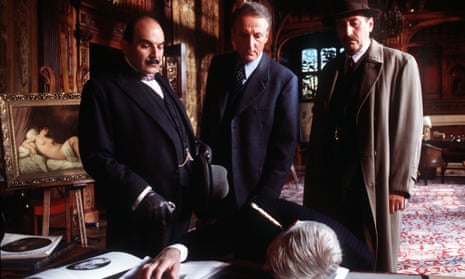For almost 100 years, Agatha Christie has beguiled readers with her much-loved mysteries. But now a panel of experts claims to have worked out how to answer the perennial question: whodunnit?
To celebrate the 125th anniversary of the birth of the world’s best-selling novelist, academics have created a formula that they claim will enable the reader to identify the killer before the likes of Hercule Poirot or Miss Jane Marple have managed the feat.
The research, commissioned by the TV channel Drama, analysed 27 of the prolific writer’s books – 83 were published during her lifetime – including classics such as Murder on the Orient Express and Death on the Nile. The experts concluded that where the novel was set, the main mode of transport used and how the victim dies were among the key clues.
One of the panel, Dominique Jeannerod, from Queen’s University in Belfast, said questions had long been asked about whether Christie followed a pattern. “We gathered data including the number of culprit mentions per chapter, a ‘sentiment analysis’ of culprit mentions, transport mentions and several cross-references with other key concepts of the novels,” he said.
“We were able to discover patterns emerging in several aspects of Christie’s novels: trends formed when we grouped our data via year, detective, gender of culprit, motive, cause of death.
“We also assessed the sentiment of the first mentions of the culprit in each work, using a sentiment analysis program, Semantria, to unmask themes in Christie’s word patterns and choices when mentioning the culprit. We found that, generally, for example, she employs more negative sentiment when the culprit is female, whereas a male culprit has higher levels of neutral or positive sentiment.”
Many of the results concerned the gender of the killer. For example, they found that if the victim was strangled, the killer was more likely to be male (or male with a female accomplice), whereas if the setting was a country house – not uncommon for a Christie novel – there was a 75% chance the killer would be female. Female culprits were usually discovered thanks to a domestic item, while males were normally found out through information or logic.
Another panel member, Brett Jacob, a data analyst, said: “From the reader’s point of view, the killer can be identified by looking at key characteristics associated with the novel.
“These include the relationship of the victim to the killer – in the majority of cases the victim is related by blood or a spouse of the killer ... in conjunction with the other characteristics such as the primary means of transport associated with the novel, which points to the killer being female (land – car or train) or male (nautical/air).
“The method of killing and the detective in the novel also point to the sex of the killer. By bringing all of these together, you can build a picture of the killer’s identity and so discount characters from the group of suspects, finally leaving the reader with the most probable identity of the killer.”

Comments (…)
Sign in or create your Guardian account to join the discussion